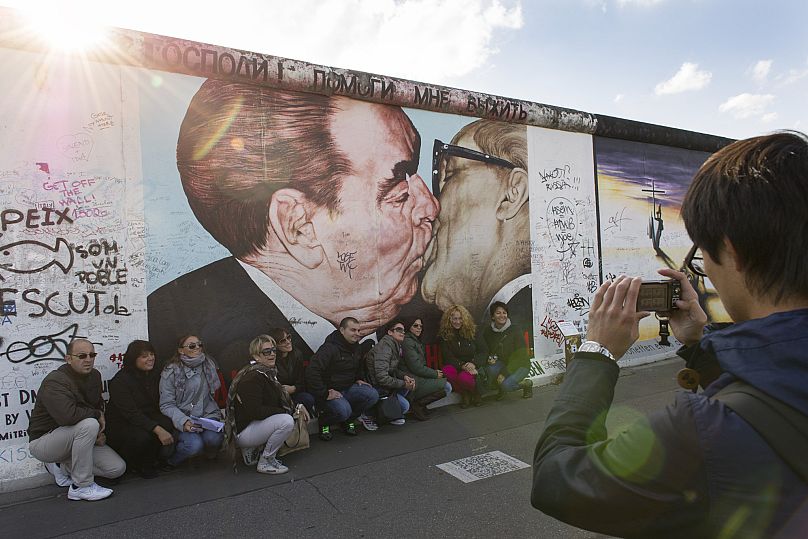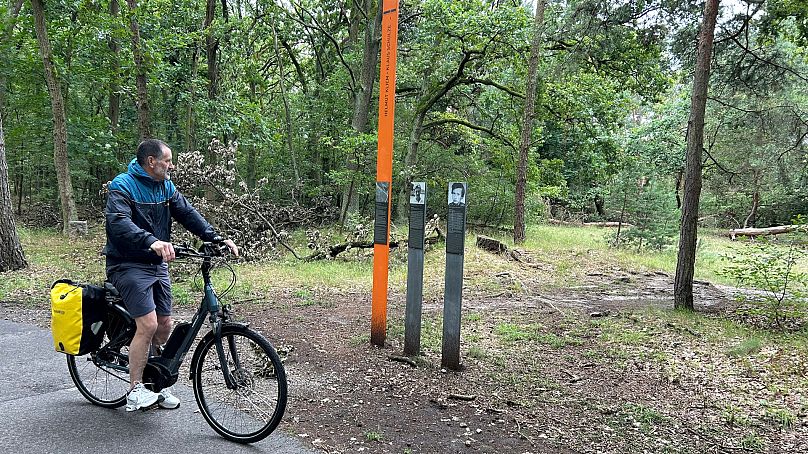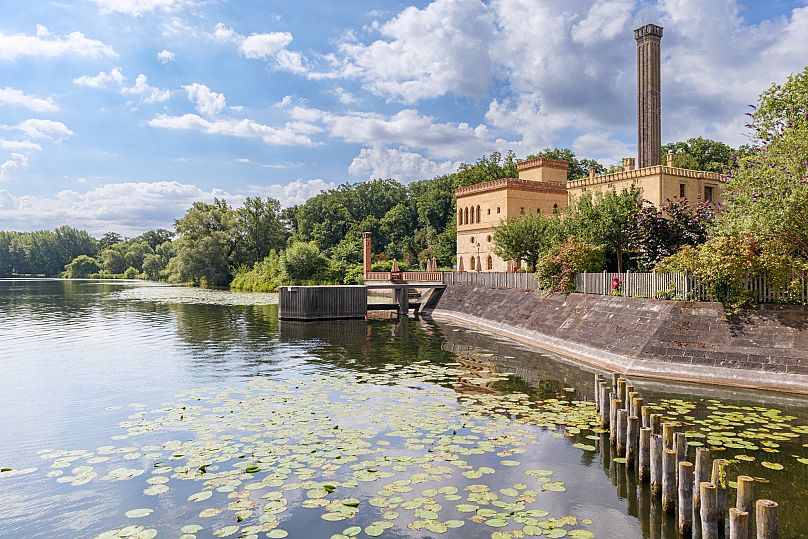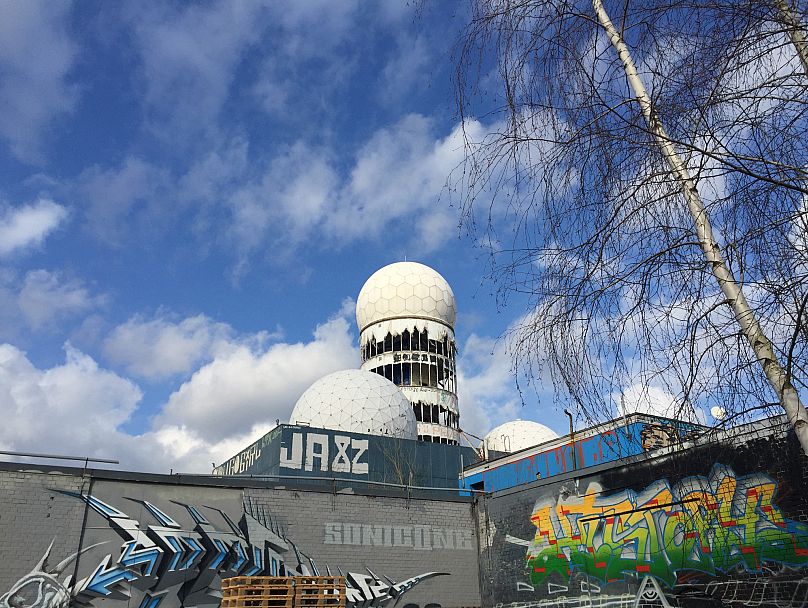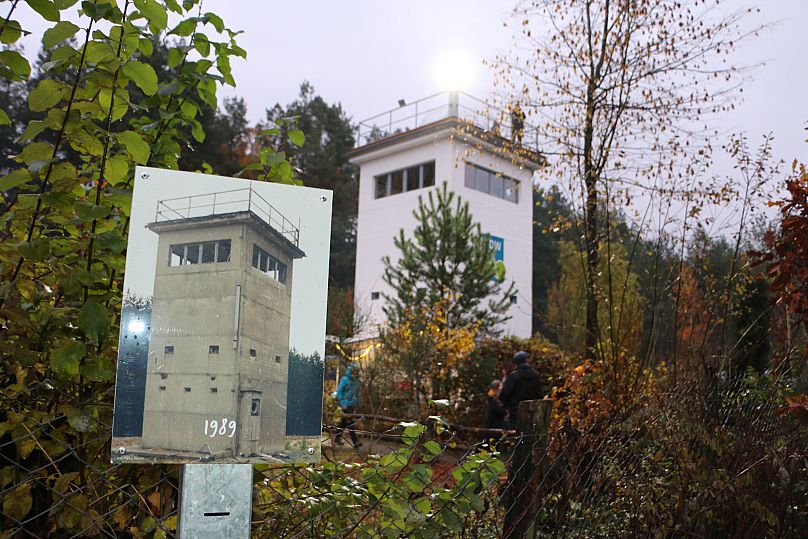From division to discovery: Cycling the Berlin Wall trail 35 years after Germany reunified
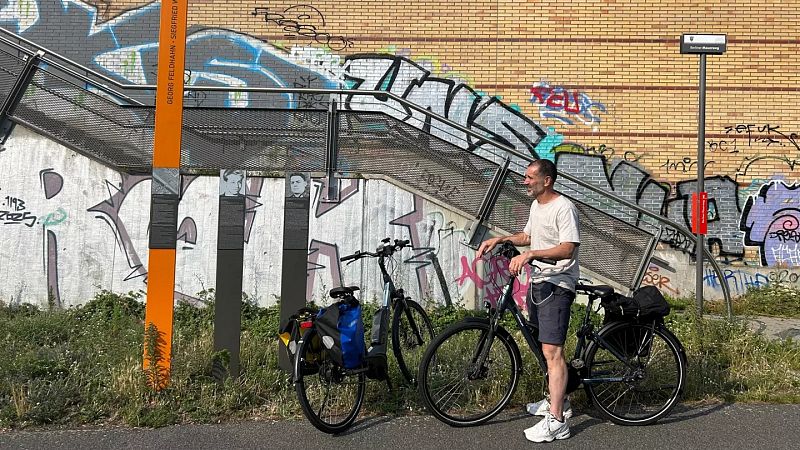
The night of 9 November 1989 was undoubtedly one of the most dramatic of the 20th century. The Berlin Wall in Germany – the armed border that had separated citizens of East and West Berlin since 1961 – was finally opened, kickstarting its dismantling. But what should be done with the ghost line that remained? Erase it from memory as if it had never existed?
In local politician Michael Cramer’s mind, an alternative idea was beginning to take shape. His vision was to retain some of the border’s components and to make a trail of its 160-km-long outline that would be more than a place of recreation for Berliners. It could be a memorial against division, and perhaps a place to teach future generations about the wall’s human stories.
Anyone saddling up on the circuit, which became fully bicycle-friendly in 2007, first needs a short history lesson. In the aftermath of World War II, when Germany’s geopolitical lines were redrawn into East Germany (DDR) and West Germany, so too was the city of Berlin. Located geographically within East Germany, it was also carved into East and West zones.
To prevent citizens from the Soviet East defecting to the West, a border to encircle West Berlin was erected like lightning on the night of 13 August 1961, causing huge socio-emotional ramifications on both sides.
Now, 35 years since East and West Germany officially reunited, I pedalled out to seek the border’s stories, discovering not just the history of the wall and fall, but art, nature and new neighbourhoods that grew in the reclaimed space.
How I cycled the complete Berlin Wall trail
Although the Berlin Wall cycling route (Berliner Mauerweg) is trail-marked throughout, I also downloaded Komoot’s route for an extra layer of navigation. It is a circuit which takes three days, but I opted to stretch it into five. I bike-packed it clockwise, exiting the route on occasion to explore some extra locations and to reach the hotels that I’d pre-booked for secure bike storage facilities.
Day zero
Before officially setting out, I spent a wheel-free day exploring Berlin and visited the DDR Museum to get better acquainted with this chapter of history. I chose to stay the night in the Prenzlauer Berg district for a couple of reasons: to fuel up on classic German carbs and ambience at Prater Biergarten; and for the short walk from my hotel – the boutique-style Oderberger known for its historic pool – to bike pick-up in the morning.
Day 1: From Prenzlauer Berg to Köpenick
After picking up my pre-booked e-bike from Berlin on Bike, the advantages of booking one of its experienced guides to accompany me in inner-city Berlin quickly became clear. Firstly, it meant I didn’t have to focus on map watching. Then, in addition to the most popular sightseeing spots such as Checkpoint Charlie and East Side Gallery, my guide, Sascha, took me to additional landmarks such as Bornholmer Strasse.
This was where the first East Germans crossed the border in 1989. Hearing it all from the mouth of someone in town on the night in question truly had me on the edge of my saddle.
Adding further layers to my knowledge bank was the open-air exhibition at Gedenkstätte Berliner Mauer (Berlin Wall Memorial), its photographic murals as thought-provoking as the cobblestones showing where escapees’ secret tunnels lay. There’s also a complete section of border fortifications on display here. Peering through the wall beneath the watchtower is a stark reminder of why so few dared to cross.
After pausing at Engelbecken lake (you’d never suspect this urban beauty spot was once a canal drained to build the wall), I said goodbye to Sascha and inner-city Berlin and pedalled on before diverting off the trail for an overnight stay at Nyx Hotel Berlin-Köpenick.
Day 2: From Köpenick to Potsdam
Rejoining the trail, this is where I first grasped that there are almost no remnants of the former wall on the trail outside of central Berlin. With only the odd passing commuter and water buffalo grazing nearby, I enjoyed a freeing ride almost alone.
From Dörfeblick, then on to the Teltow canal and beyond, through wooded areas, residential streets and open countryside, I could see that this was neither a seamless nor a monotonous path. It’s a good way to get a sense of a broader Berlin. It felt like a window on suburbia that few tourists get to see.
Where to stop along the route was sort of decided for me. Punctuating the trail like beacons are commemorative steles, each at the exact height of the former wall, with many telling a sobering, ill-fated story about a crossing attempt.
Contemplating, among others, Eduard Wroblewski, whose escape was thwarted by 274 bullets, I completed the rest of the route to today’s terminus in Potsdam to hang up my helmet for two nights at the spacious and stylish Design Apartments.
Day 3: Potted Potsdam
Long before a wall demarcated an east and a west, Potsdam – the state of Brandenburg’s largest city – was the playground of Prussia’s most eminent members of society. And it’s a fact mirrored in its grandeur. While most day trippers from Berlin only have time to see its headlining landmark, Frederic the Great’s flamboyant Sanssouci Palace, two nights in town afforded me a deeper dive.
I had time for the Barberini Art Museum (boasting more Monets than anywhere else in Europe outside Paris). With two wheels, I could nip around the steady stream of serene lakes and international architectural inspirations that make Potsdam feel like a map of the world.
Among them are Babelsberg Castle, recalling England’s Windsor Castle; a Dutch Quarter reminiscent of Amsterdam’s Herengracht; Nauen Gate as if borrowed from a Scottish Loch; and Sanssouci itself like a Prussian Versailles.
After a beer at microbrewery cum beauty spot Brauerei Meierei, the ultimate antidote to the former border on which it sits, I concluded the day al fresco at the lakeside fine-dining restaurant Höfts. Overlooking Potsdam’s Marble Palace, Heiliger Lake’s only ripples were those of wild swimming locals.
Day 4: Potsdam to Hennigsdorf
Starting the day at Glienicke Bridge, where Americans and Soviets once exchanged their spies, today posed a dilemma. Should I take a ferry from Wannsee to Kladow and remain on the wall trail? Or should I follow a local tip-off that a detour bike ride through Grunewald forest to hilltop Teufelsberg could be rewarding?
Turns out, the detour was worth it. Once an American listening station in the Cold War, today it’s one of Berlin’s most alluring and curious landmarks – a unique and expansive street art destination of some 400 international works.
Descending again, I rejoined the wall route at Staaken before skirting Spandau forest, cycling waterside along the Havel, then heading to the town of Hennigsdorf for a night at Wyndham Garden hotel.
Day 5: From Hennigsdorf back to inner-city Berlin
Starting today’s ride on the outskirts of Hennigsdorf in street names as optimistic as ‘Freedom’ and ‘Unity’, and with the end of the trail in sight, I reflected both on the physical sense of accomplishment and 160km of stories.
The last squeeze of the brakes came in Bergfelde at one of the trail’s five surviving watchtowers. Here, just a few decades ago, my eyes might have met an armed guard’s, yet the watchtower is now a peaceful education centre, Naturschutzturm, teaching children about the environment.
It’s a last note that strikes me as small yet seismic: roots of renewal in the space once occupied by one of the world’s most no-go borders.
For further information, visit visitberlin.de and brandenburg-tourism.com**.* You can read more about safe cycling in Berlin here.*
Today


